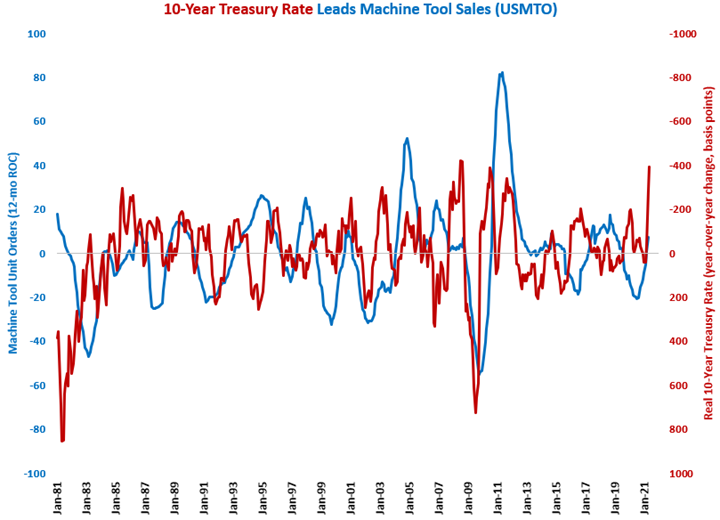Real 10-Year Treasury Rate Falls to -3.37%
While the nominal 10-year Treasury rate was unchanged in April, the real 10-year Treasury rate fell to its lowest rate since June 1980. The reason for this was that the rate of inflation increased to 4.99% in May, which was the highest rate of inflation since August 2008.
In May, the nominal 10-year Treasury rate was 1.62%, which was virtually unchanged from March and April. Essentially, this was the highest rate for the 10-year Treasury since January 2020. Of course, historically, the current rate is extremely low.
While the nominal 10-year Treasury rate was unchanged in April, the real 10-year Treasury rate fell to its lowest rate since June 1980. The reason for this was that the rate of inflation increased to 4.99% in May, which was the highest rate of inflation since August 2008. As the real 10-year Treasury rate is the nominal rate minus the inflation rate, the real 10-year Treasury rate was -3.37% in May. This is very stimulative to the economy.
The year-over-year change in the real 10-year Treasury, now -392 basis points, was more negative for the third month in a row. The change was negative for 20 of the last 22 months, falling to its lowest level since August 2008.
As much as the absolute level of interest rates, it is the relative change in interest rates that drives additional borrowing and spending. A falling change in the real 10-year Treasury rate tends to be a positive signal for durable goods manufacturing. Falling changes in the real 10-year Treasury rate tend to lead to expansion in durable goods new orders and capital equipment consumption by a relatively long period of time – historically, between 12 and 24 months. The falling change in the 10-year Treasury rate is a good leading indicator of future growth in housing permits, construction spending and consumer durable-goods spending as well.





.JPG;width=70;height=70;mode=crop)
